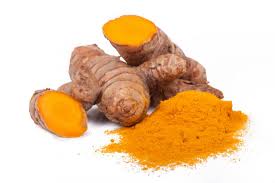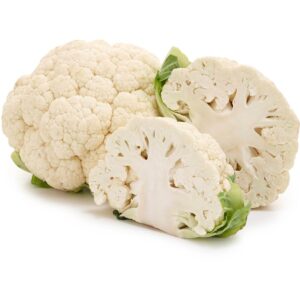Top 5 immune boosting foods that your kids should be eating this winter

What are the best immune boosting foods that your kids should be eating this winter?
With the arrival of winter, your immune system may need a boost to combat the coughs and colds abound this time of year. Consuming the right foods is a great way to boost your immune system. Here are five key foods you can incorporate into family meals to help minimise the risk of infections and help keep your family healthy.
Garlic!
Garlic is one of the most powerful immune stimulating foods. Its high alliin content provides strong antimicrobial and antiviral properties that help combat those pesky winter infections. Now, here’s the clincher… to utilise the potent strength of alliin, the garlic needs to be crushed and consumed raw, even more so if you can let it sit for 5-10 minutes. The crushing produces allicin and ajoene which are responsible for these powerful pharmacological effects. When you cook garlic, this reaction doesn’t occur, and the powerful immune properties of garlic are lost.
Dips are an excellent way to consume raw garlic. Throughout winter at Niño, this is why we serve a variety of garlic-packed dips with fresh veggie sticks. Here are some easy suggestions to get raw garlic into your meals:
- Hummus
- Salad dressing or vinaigrette
- Olive oil spread. Crush garlic into olive oil and rub it onto bruschetta, drizzle over homemade croutons or roasted vegetables just before serving
- Pesto is a great way to include raw garlic. You can use basil, kale or parsley to make a delicious and nutrient rich pesto
Mushrooms
Mushrooms are a wonderful source of polysaccharides of which the primary bioactive component is beta-glucans. These are largely responsible for the therapeutic and immune-modulating effects of mushrooms. Mushies are also anti-inflammatory, antiviral and antioxidant which is exactly what we need when we’re fighting a cold or trying to maintain a strong immune system through winter. What’s not to love hey?!
Not all mushrooms are made equal and some have more powerful immune boosting properties than others. Many of the Chinese mushrooms can only be accessed in a supplement form, however simply including any mushrooms in the diet will assist in supporting immune function. Even the plain ol’ button mushroom has shown immune boosting effects by increasing the function of Natural Killer cells, which are important in fighting infection. Shitake is a well-researched mushroom and an excellent source of B vitamins along with being an immune modulator. It has a lovely flavour without being overly ‘shroomy’ which is great if you have children who find the mushroom flavour overwhelming. On a practical level, the best way to get the most bang for your buck in the nutrient stakes when cooking with mushrooms, is to include a variety of species.
Some suggestions to include mushrooms in the family diet:
- Bolognese (finely chop a variety of different mushrooms and sauté with onion, carrot and other veggies at the beginning of a Bolognese)
- Shitake mushrooms finely sliced and sautéed before tossing through soba noodles with a soy or ponzu dressing
- White sweet potato and shitake patty – simply roast a white sweet potato, scoop out the flesh and mix with finely chopped shitake mushrooms and 1 egg. Form into patties and roll in breadcrumbs or almond meal and lightly shallow fry. Serve as you would a burger patty; in a lettuce cup or burger bun
Turmeric
It’s hard to know where to start when talking about the many benefits of turmeric, particularly the active constituent found in turmeric, curcumin. Turmeric is fabulous for the gastrointestinal tract; it is anti-inflammatory, antioxidant and both antimicrobial and antibacterial which is excellent when you’re in the throngs of a winter cold. As a culinary spice it is easy to include in food preparation and gives a lovely yellow hue to a meal. Very simply, you can add a ½ teaspoon to rice before cooking and you will have a gorgeous yellow rice. Kids often like this for something a little different. Black pepper increases the bio-availability of turmeric so you can grind a little into your spice mix to increase the absorption of the curcumin.
Here are a few other ways to include turmeric into your diet, all of which we include in our Niño menu throughout the seasons:
- Golden Milk – add a little turmeric powder to warm milk (rice, almond, cow, coconut), along with a little honey to sweeten. You can add other spices such as cinnamon, cardamom and a little black pepper to make it more like a golden chai
- Curry and Dahl – include turmeric into your spice mix when making dahls and curries
Fermented Foods
Research into the human microbiome and the health implications of a diverse colony of microorganisms in our digestive tract is exploding. However, many of the foods that help feed our good bacteria and support healthy digestion, have been around in traditional cultures for a long time. Including fermented foods in the diet is a great way to boost immune function and need not be a daunting or labour intensive exercise.
Naturally fermented foods are living foods and an excellent source of beneficial bacteria. They are vital in nourishing and protecting our intestinal cells, thus promoting health, mood and reducing digestive discomfort and allergic reactions.
What’s the difference between pre-biotic foods and pro-biotic foods? Prebiotics are the food that the friendly bacteria like to eat. They are a fibre that contains fructans and galacto-oligosachairdes (such as onion, garlic, leek, asparagus, banana), and feed the good bacteria in the gut. Whereas Probiotics are the bugs. Probiotic foods assist in recolonising the good strains of bacteria which helps to regulate immune function and assist in fighting infections. Probiotics are responsible for 70% of our immune response.
Dietary options for pre-biotic foods:
- Leek and asparagus tart
- Mashed banana on sourdough toast
Dietary options for pro-biotic foods:
- Cultured vegetables such as Beetroot, Apple and Cabbage Sauerkraut
- Kombucha – making your own is simple and there are loads of tutorials online. Alternatively, there are great store bought varieties and some fun flavours that kids will enjoy.
- Plain yoghurt
If consuming fermented vegetables is new, begin with a little and slowly increase as your gut becomes used to the fermented food slowly and won’t cause any bloating or discomfort.
Cruciferous Vegetables
All cruciferous vegetables such as broccoli, cabbage, brussels sprouts and cauliflower, are great for supporting immune health. They are rich in antioxidants, high in fibre and they contain choline which supports gut function. They also contain sulfur (as do onions and garlic), which support the function of neurotransmitters. We would like to shine the light on cauliflower as we are growing this delightful vegetable in our centres. Rich in glutathione which helps fight infection, cauliflower is also a good source of folate and vitamin C. This humble vegetable has such a wide variety of uses, I am constantly amazed at its versatility.
Some of my favourites are:
- Cauliflower and white bean soup
- Simply tossed in olive oil and salt and roasted – eaten as is or tossed with pomegranate seeds, baby spinach and a tahini dressing for a hearty winter salad
- Used as a pizza base. There are some great recipes out there using cauliflower as a pizza base, which is a great gluten free alternative.
Lauren Burns is the Niño ELA Nutritional Ambassador, an Olympic gold medallist and a leading nutritionist who shares our passion for building healthy eating habits for life.







